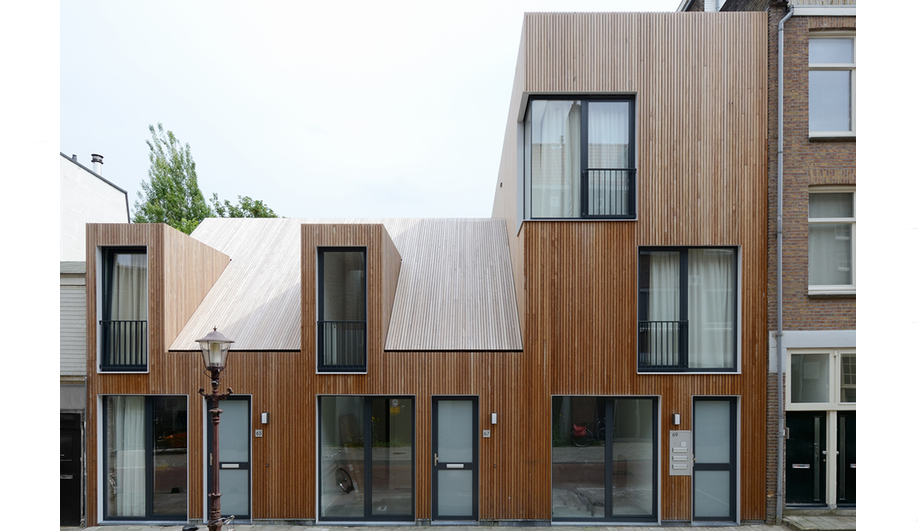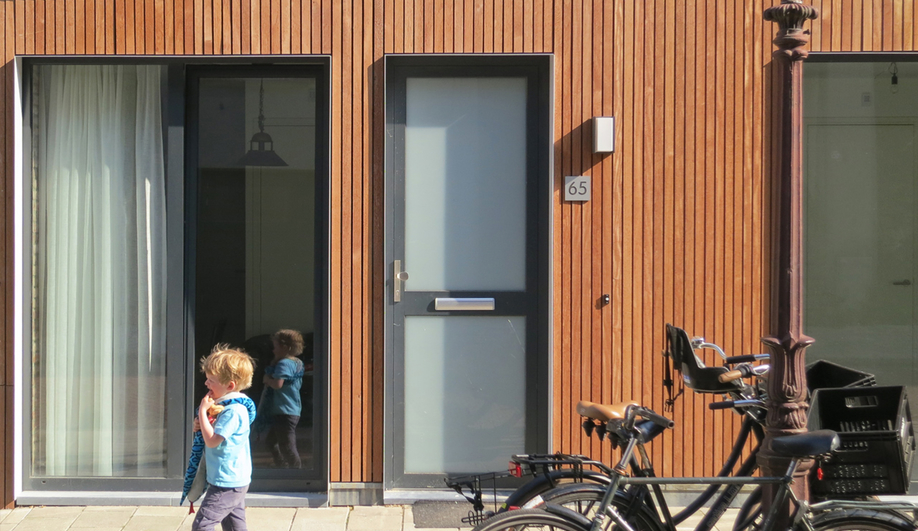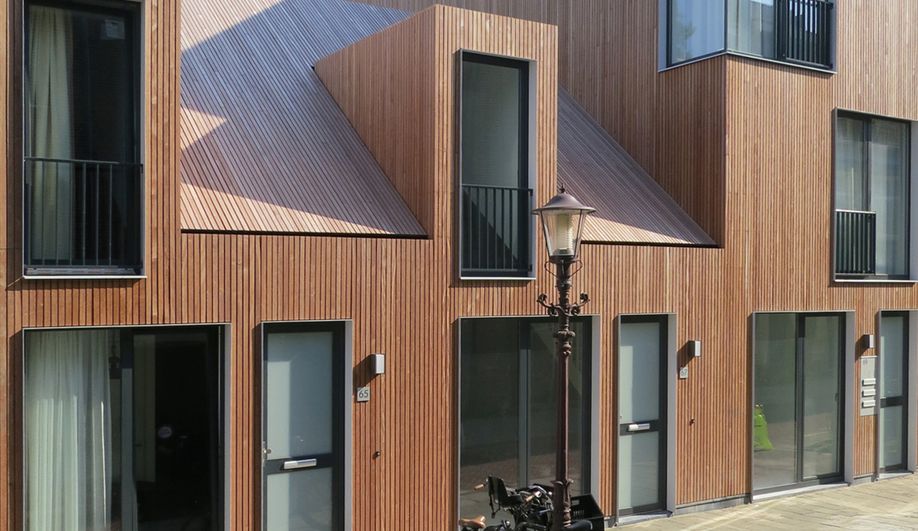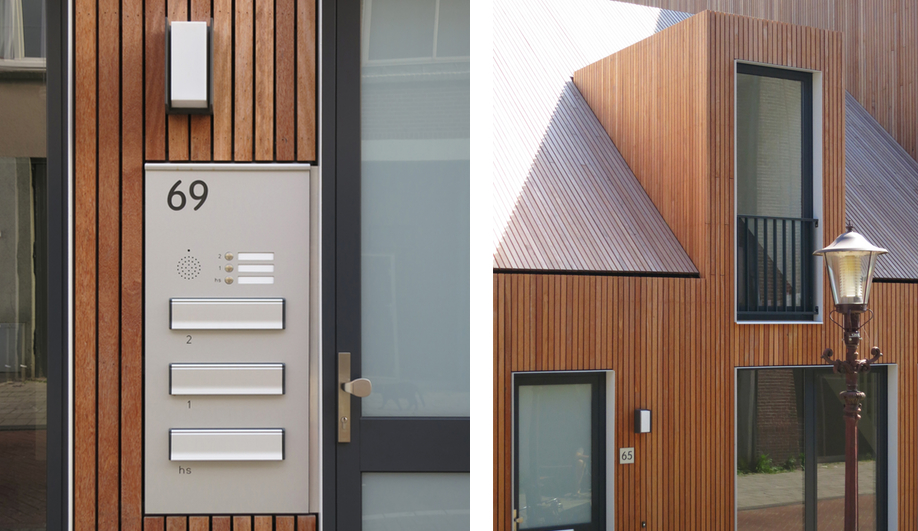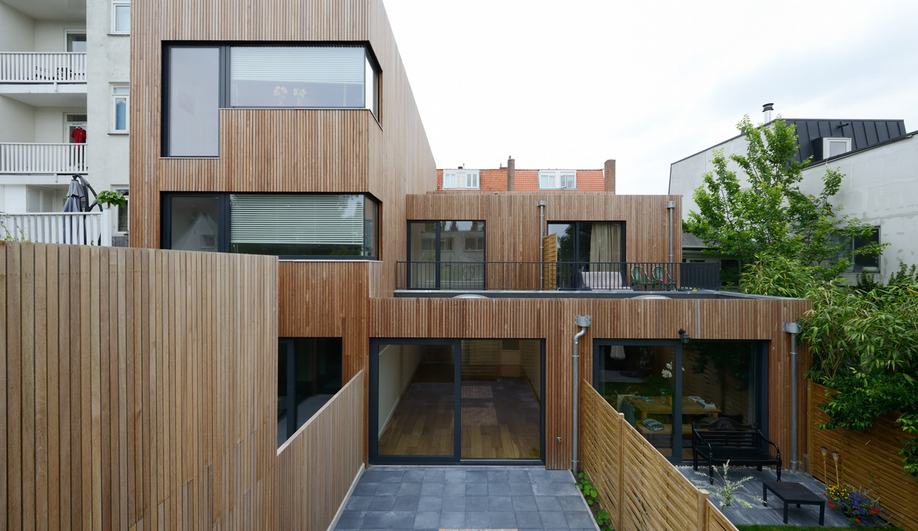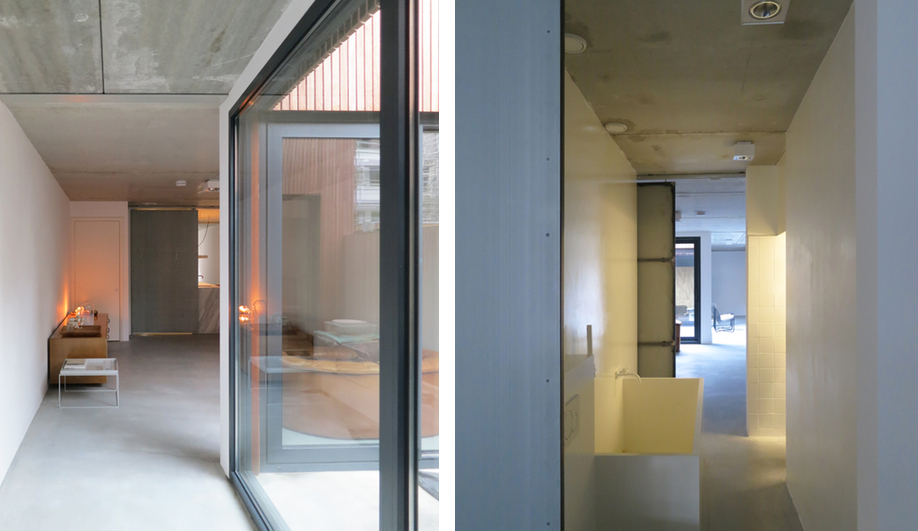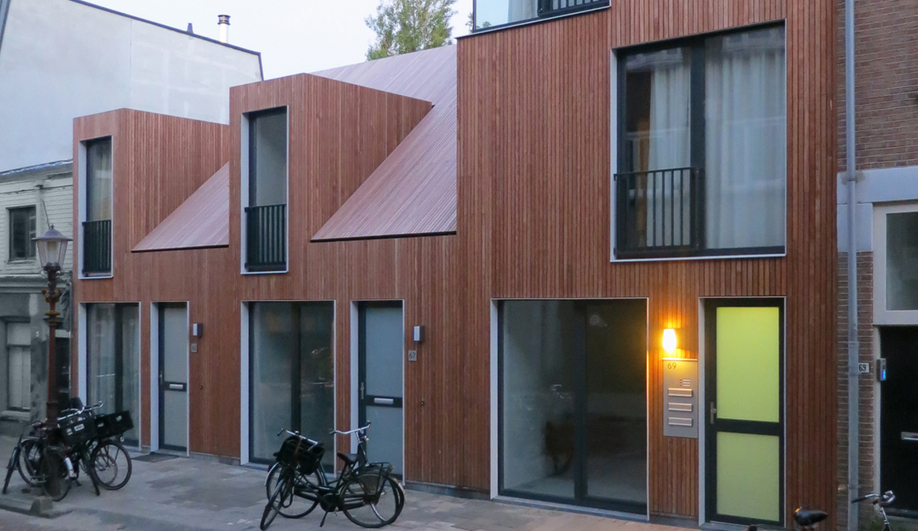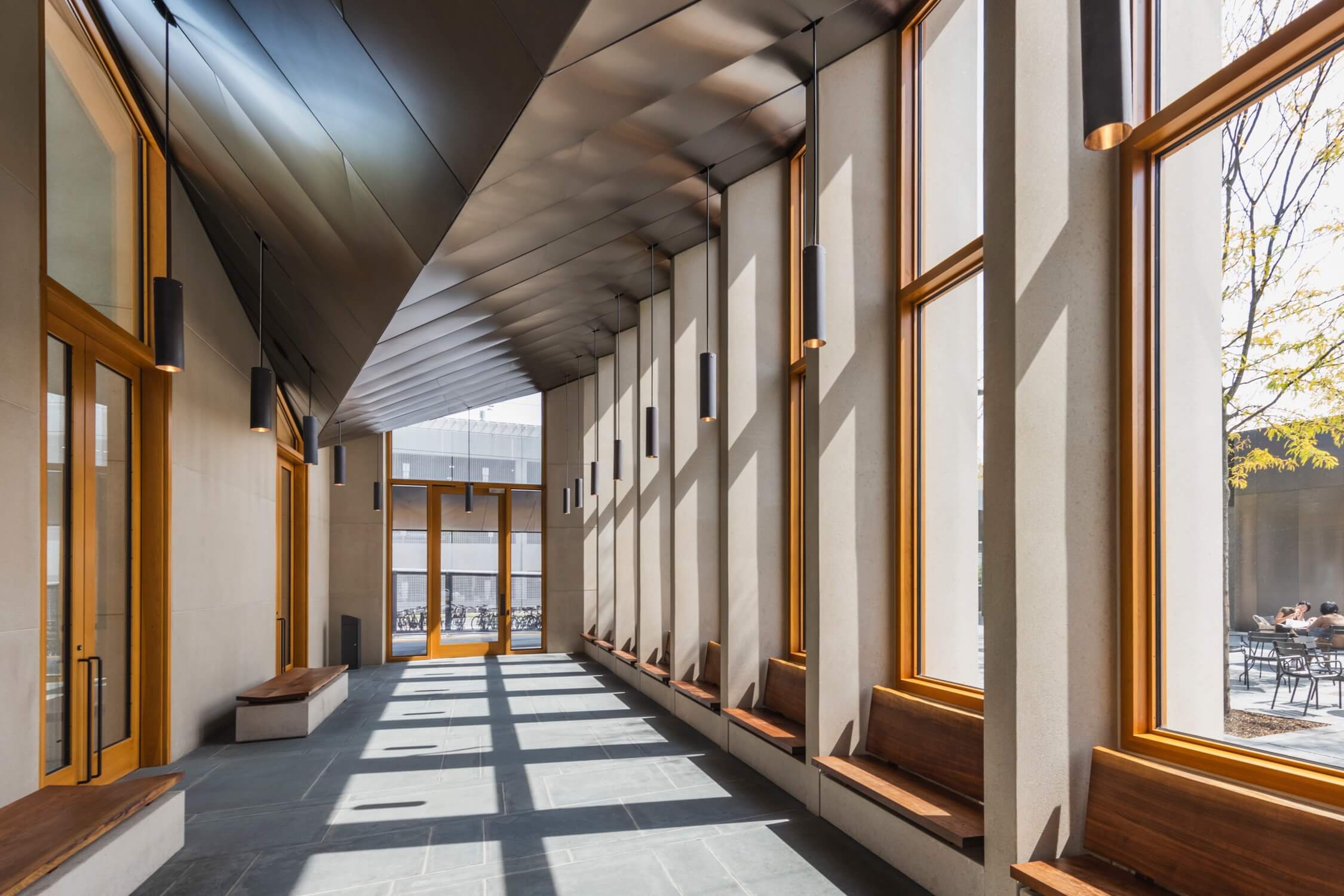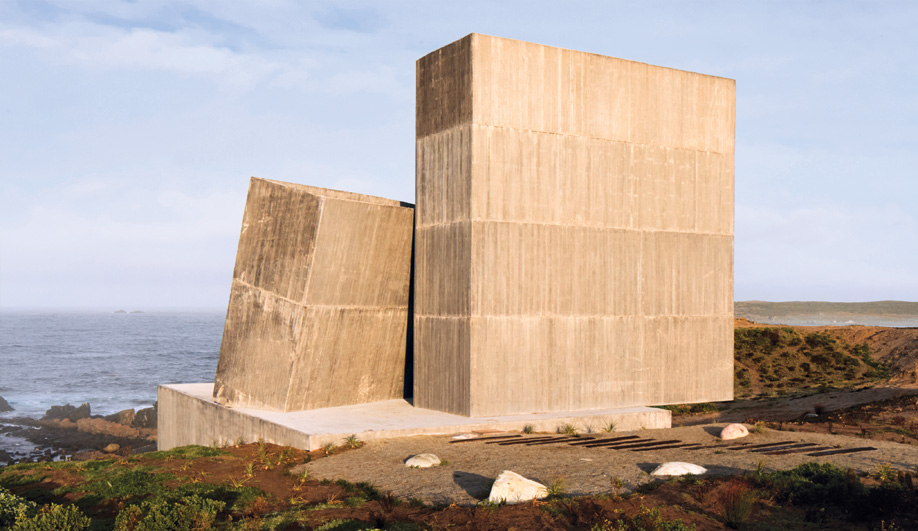The three-unit complex by M3H is a master class in building small while maintaining a sense of expansiveness.
It took a whole community – and 10 years – to transform a narrow street in Amsterdam’s Bellamy neighbourhood. The array of new builds and refurbished dwellings is true to Wenslauer Street’s village-like roots, defined by varied plot sizes, and staggered rooflines rising only a few stories high. Playing a major role in this makeover is local architecture firm M3H.
The most exciting additions to the street are numbers 65, 67 and 69, which comprise M3H’s wood-clad building complex. It eschews the big-box apartment vernacular for a meandering, jutting facade befitting the live/work neighbourhood’s charm. The project consists of two town homes (65 and 67) and a three-storey, three-unit apartment building (69). The two single-family dwellings are both one storey tall, with sloped roofs that bend sunlight onto the sidewalk and skylights that pull the rays downward into the kitchen and bedroom as well.
The apartment building, on the other hand, consists of three units stacked on top of each other, each with its own unique floor plan to keep the intimate quarters feeling airy and connected with the street below. In the ground floor apartment, a south-facing patio pulls light through an unbroken sightline all the way to the other end of the unit, while the second-floor unit boasts a balcony, and the top apartment can be extended to include a rooftop terrace (it has a special corner window to allow in ample natural light).
All three addresses are connected by a sculptural facade of FSC-certified Sucupira Amarela wood. To ensure the untreated wood would age without rotting, the design team installed a double layer of slats within the timber framework to ventilate it, and another layer of asphalt to retain water. The result is a refreshing break from Amsterdam’s brick-clad neighbourhoods; plus the wood’s brown hue will slowly transition to a nicely weathered grey within a couple years, allowing the building to change and transform with the community itself.

